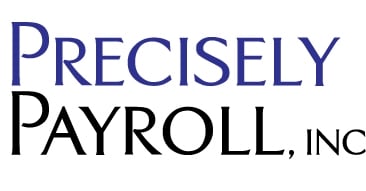In modern business, time management is crucial. Time clocks have evolved significantly over the years, from simple punch cards to sophisticated digital systems that track employee hours with precision. This evolution has made it easier for businesses to manage their workforce, reduce errors, and ensure compliance with labor laws.
For small business owners and HR managers, understanding the value of a great time clock is essential. It’s not just about clocking in and out; it’s about creating a system that enhances productivity, saves money, and improves overall workforce management.
Timekeeping might seem like a mundane task, but doing it wrong can lead to significant problems. Without a reliable timeclock system, small businesses often face:
Financial Loss
Inaccurate time tracking can result in overpayments or underpayments. Overpayments inflate labor costs, while underpayments can lead to legal issues and employee dissatisfaction.
Inaccurate Data
Manual timekeeping methods are prone to errors, whether from honest mistakes or intentional time theft. These inaccuracies can distort payroll calculations and financial reports, making it difficult for businesses to maintain accurate records.
Inefficiency
HR managers can spend excessive time on administrative tasks without an automated system. This includes tracking hours, verifying timesheets, and processing payroll. This inefficiency detracts from their ability to focus on practices that drive business growth.
Features of a Great Time Clock
User-Friendly Interface
The best time clock systems are easy for employees to use. They have a small learning to minimize errors. Look for intuitive systems that provide clear instructions.
Integration with Payroll
Seamless integration with payroll systems ensures that hours worked are automatically transferred for payroll processing, reducing the risk of errors and saving time on data entry. This integration also helps in maintaining compliance with labor laws by ensuring accurate wage calculations.
Real-Time Tracking
Real-time tracking allows managers to monitor employee hours as they happen, providing immediate insights into attendance patterns and potential issues. This feature can help in identifying trends such as frequent tardiness or unexpected overtime, allowing for timely interventions.
Choosing the Right Time Clock for Your Business
Selecting the right time clock system for your business requires careful consideration of several factors:
Business Size and Needs
Consider the size of your workforce and the specific needs of your business. A small retail store might have different requirements than a mid-sized manufacturing plant. Ensure the time clock system you choose can scale with your business as it grows.
Budget
While it’s tempting to go for the cheapest option, remember that a time clock system is an investment in your business’s efficiency and accuracy. Weigh the cost against the features and benefits to find a system that offers the best value.
Compatibility
Ensure that the time clock system is compatible with your existing software and hardware. This includes payroll systems, HR management software, and any other tools you use for workforce management.
Customer Support
Reliable customer support is crucial for addressing any issues that arise during implementation and daily use. Look for providers that offer comprehensive support, including training resources, troubleshooting guides, and responsive customer service.
Implementing a New Timeclock System
Once you’ve chosen the right time clock system, successful implementation is key to reaping its benefits. Here are some best practices and common challenges to be aware of:
Provide thorough training for all employees to ensure they understand how to use the new system. This can include hands-on demonstrations, instructional videos, and written guides.
Communicate the benefits of the new system to your team. Help them understand how it will make their work easier and more accurate.
Before full implementation, run a pilot test with a small group of employees to identify any potential issues and gather feedback for improvements.
Common Challenges
Employees may resist new systems due to unfamiliarity or fear of increased oversight. Address these concerns by highlighting the positives and providing ample support during the transition.
New technology can come with learning curves! Ensure you have a support plan in place to address these quickly.
If you’re moving from an old system to a new one, ensure that data migration is handled carefully to avoid loss or corruption of important information.
Time Clocks in Bend, Oregon
Investing in a great time clock system can help your business by increasing efficiency, reducing errors, and improving overall employee satisfaction. For small business owners and HR managers, the right time clock system is not just a tool but a strategic asset that can drive growth and success.
By understanding the importance of accurate timekeeping, recognizing the problems that can arise without a great system, and knowing what features to look for, you can make an informed decision that benefits your entire organization. Implementing a new system may come with challenges, but with careful planning and execution, the rewards far outweigh the risks.
Ready to take your business to the next level? Contact Precisely Payroll in Bend, Oregon. We are payroll experts who offer time clock software to improve your business processes. Contact us to learn more about our services. You can reach us by phone at (541) 317-0100 or email at hours@preciselypayroll.com

